The Definitions of Tango
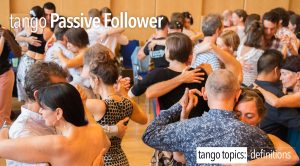
Definition: Passive Follower
Typically this phrase is used to describe a less than desirable Follower, when in reality the Passive Follower is a way of describing a noble state of Following and really what happens most of the time in the role of the Follower.

I Move Me – Tango Topics
What is "I Move Me" ? It means that YOU, as the Follower, are responsible for taking the initiative to ensure that your technique is spot on. When you feel or sense the intention from your Lead that you apply your technique to the best of your ability while you engage your body and muscles, and respond quickly to get from point ‘a’ to point ‘b’ in an expeditious manner.
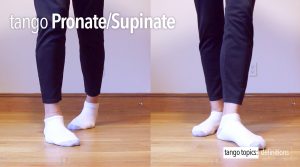
Definition: Pronate/Supinate
Usage. In the case of Pronation it is a telltale sign that the dancer (lead or follow) has an unconscious lack of control and precision in their motions between the steps (sometimes referred to as a ‘dangling’ foot) which also speaks to their lack of detailed work that must occur at all points along a step and movement.

Definition: Active Follower
What is an Active Follower ? The answer is multifaceted: 1.) The ability to change X into Y with the barest hint, the slightest movement, and make the Lead believe that it was their idea the entire time without interrupting the lead. 2.) The ability to turn on and off, as though it were a switch, the musical accompaniment of patter, milonga, or an adornment, or an embellishment, and to place a movement that may not have been led but does fit within the motion that is being…

Definition: Encuentro
What is an Encuentro? The answer is multifaceted, and multilayered. The definition covers several areas: Frequency of dance. Style of dance. Códigos of dance. Floorcraft. Music and the Tango DJ. As well as the environment itself.

Definition: Mordida
Usage. In the case of Argentine Tango, we use, and define, the word Mordida in a very specific way. We mean to define what one dancer can do to another dancer’s feet, to ‘sandwich’ one feet between two others. Typically this is done to the Follower by the lead in one of 4 pieces of Tango vocabulary: Volcada, Colgada, Parada, or Barrida. However, a good portion of Leads, employ this idea every time they come to a stop, which is an error.
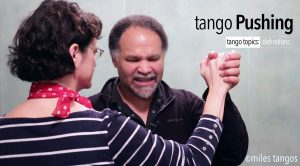
Definition: Pushing
Pushing. According to Webster’s Dictionary the word ‘Push’ is a verb that means “to exert force on (someone or something), typically with one’s hand, in order to move them away from oneself or the origin of the force”. It comes from the middle english word (1250 – 1300) ‘pushen’. Pushing is the adjective form, and generally means the same thing. Generally. 😉

The Following Mantra
The Follower has a Mantra too! This is an idea that focuses a lot on physiological awareness as well as kinesthetic ability. It should not be overlooked.
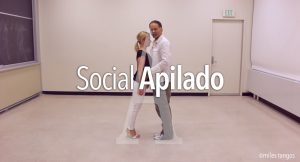
Definition: Apilado
Apilado (pron: Ahh-Pee-Lah-Do), this word is the past participle of the verb ‘Apilar’ which means ‘to pile up’ or ‘to put in a pile’. From a Tango perspective it means to put one’s body onto another, or to place your body onto another persons body. This style is the ‘iconic’ look of tango, the leaning bodies that form an "A" frame between the partners.
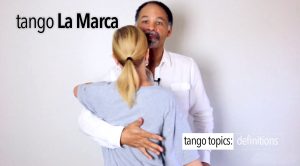
Definition: La Marca
La Marca can be, but is not limited to, as a way for a Lead (the person, not the action) to denote that X is to be done at A. Where X can be, but is not limited to, an Ocho, the Follower’s Molinete, an Argentine Cross, etc. Where Y can be, but is not limited to a specific beat, a musical pause, the ending of a musical paragraph, an accent note, a sincopa, la variacion…etc. It can be, and usually is, entirely musical in it’s application.
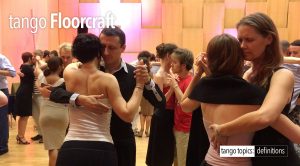
Definition: Floorcraft
‘Floorcraft’ is, but is not limited to: The active choice of, and execution of tango vocabulary (lead or follow) in time to the music (beat/pause/and phrasing), within the line and lane of dance, that does not impede the ronda, or the couples around the initiating couple (as a lead or follow), nor does it impact or endanger other couples. Instead, floorcraft as a practice works harmoniously within the embrace of the initiating couple, and then the couples around them, and co-exists peacefully within the ronda….
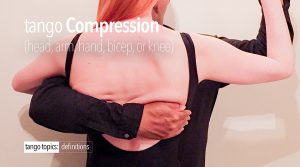
Definition: Compression
Tango Compression can best be defined in one of three ways. 1.) A constriction of the muscles of the knee, (or elbow) to build up ‘energy’ to be used to sustain a position, stance, and/or movement. 2.) A constriction of the muscles around the elbow, or hand (and wrist) which is used as an indicator to either start or stop motion. Typically this is used as a way to communicate clear intent from Lead/er to Follow. 3.) Laying one’s head onto the head of the partner, employing (unconsciously) the weight of their head onto their partners.
